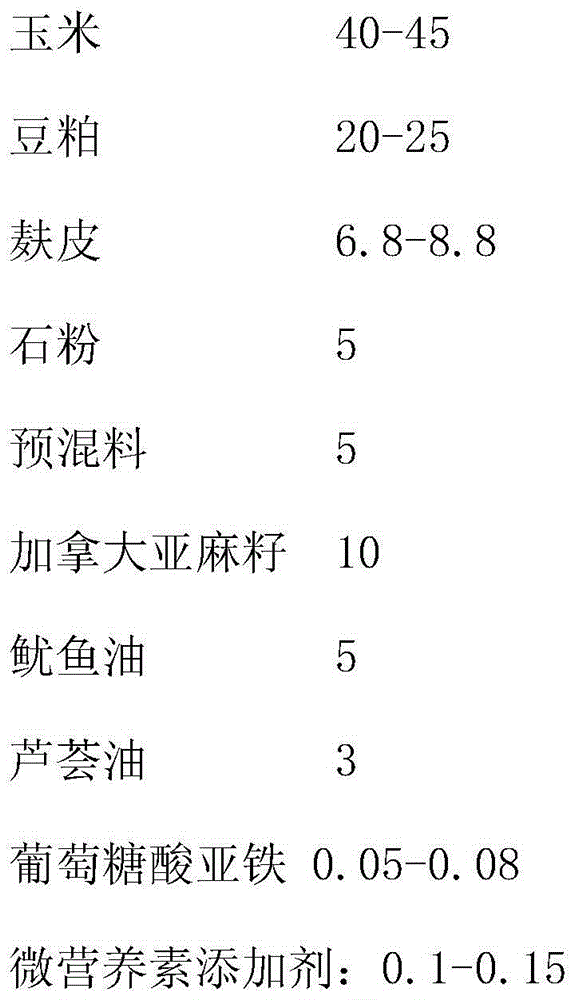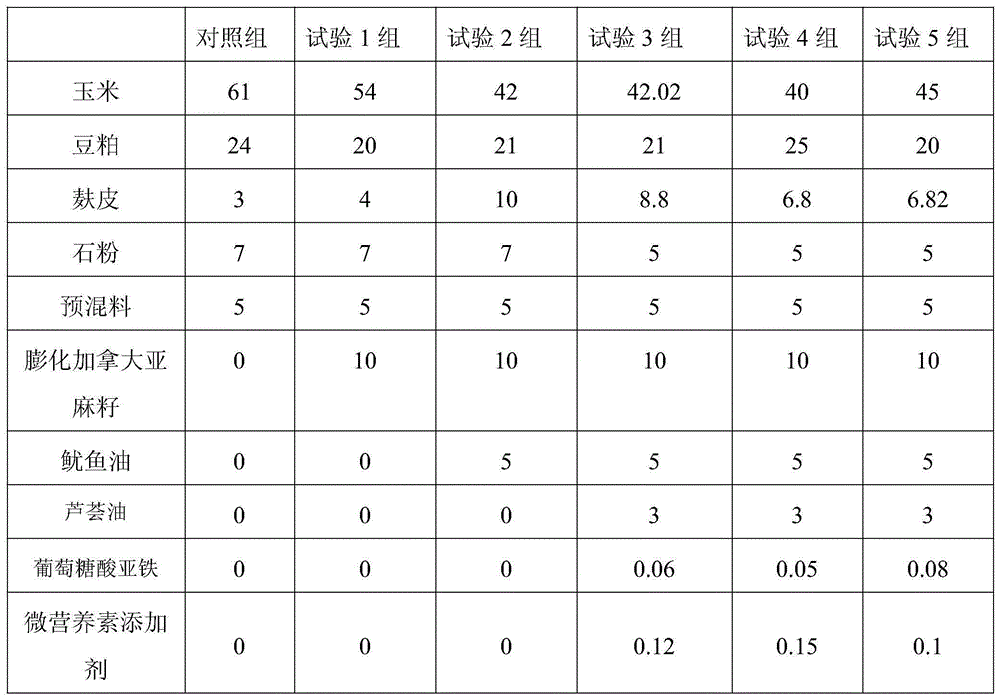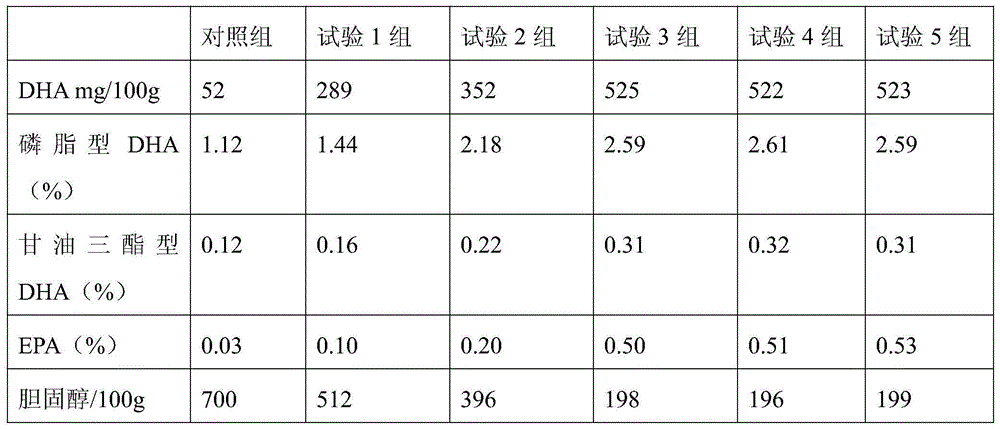Chicken feed and chicken breeding method
A feed and egg technology, applied in animal feed, animal feed, application, etc., can solve the problem of low efficiency of long-chain ω-3PUFA, and achieve the effect of easy promotion, simple use and harmless feed
- Summary
- Abstract
- Description
- Claims
- Application Information
AI Technical Summary
Problems solved by technology
Method used
Image
Examples
Embodiment 1
[0018] Example 1: Determination of the optimal week age for collection of high DHA eggs
[0019] 25-week-old laying hens were used in laying hen farms, fed a diet of 8% expanded flaxseed and 3% fish oil, and were fed on 12 days, 29 days, 45 days, 60 days, 72 days and 87 days after feeding, respectively. The eggs were collected on the first day, and the contents of DHA were determined to be 1.50%, 1.90%, 3.60%, 3.40%, 1.81% and 1.76%, respectively. The results showed that DHA increased with the time of feeding the formula containing flaxseed. It increased significantly, and reached a peak at 45 days of feeding and maintained to 72 days, until it began to decline at 87 days of feeding. Therefore, it is determined that the best egg collection time for producing high-DHA eggs is 4 weeks to 10 weeks after feeding.
Embodiment 2
[0020] Embodiment 2: the feed preparation technology of producing high phospholipid type, low cholesterol eggs
[0021] Select squid oil rich in DHA, the DHA content is 14.0-17.0%.
[0022] Imported Canadian linseeds are used, the crude fat content is 34-37%, and the linoleic acid content exceeds 15%. The linseeds are processed by wet puffing.
[0023] A total of 288 laying hens with a laying age of about 25 weeks were selected in the experiment, and they were randomly divided into 4 groups, with 6 repetitions in each group, and 12 laying hens in each repetition.
[0024] The test grouping is the control group: the conventional formula of the laying hen farm is adopted;
[0025] Experiment 1 group: add 10% flaxseed in the feed formula;
[0026] Experiment 2 group: 10% flaxseed and 5% high DHA fish oil were added to the feed formula;
[0027] Experiment 3 added 1kg of 10% fucoxanthin per ton of feed on the basis of experiment 2. Fucoxanthin can stimulate the liver to produce...
Embodiment 3
[0033] Embodiment 3: Feeding and result determination
[0034] 25-week-old laying hens were used in laying hen farms to feed the above-mentioned diet, and eggs with high DHA were collected from 4 to 10 weeks after feeding.
[0035] Eggs were collected on the 45th day of the experiment and the contents of DHA, EPA and cholesterol in the eggs were determined. The specific measurement results are shown in Table 2.
[0036] DHA, EPA and cholesterol determination result in the egg that table 2 test obtains
[0037]
[0038] It can be seen from the table that the DHA content is 1.60% when flaxseed is added separately to the basic formula, indicating that laying hens can convert a-linolenic acid into DHA in the body; DHA squid oil, the DHA content increased significantly, and the DHA content in eggs can be increased to 289mg / 100g, indicating that the transformation of DHA only by a-linolenic acid in flaxseeds is limited, which is consistent with the research results of Ferrier (...
PUM
 Login to View More
Login to View More Abstract
Description
Claims
Application Information
 Login to View More
Login to View More - Generate Ideas
- Intellectual Property
- Life Sciences
- Materials
- Tech Scout
- Unparalleled Data Quality
- Higher Quality Content
- 60% Fewer Hallucinations
Browse by: Latest US Patents, China's latest patents, Technical Efficacy Thesaurus, Application Domain, Technology Topic, Popular Technical Reports.
© 2025 PatSnap. All rights reserved.Legal|Privacy policy|Modern Slavery Act Transparency Statement|Sitemap|About US| Contact US: help@patsnap.com



